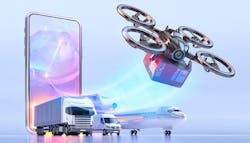Idle minds, idyll finds
When the goings get tough, the tough should innovate.
With a growing number of people working from home these days who aren’t trained or used to the “freedom,” you’d surmise that many succumb to idling along and “wasting” time (as in non-productive tasks for the boss and the corporation).
Idle minds tend to beget one of three things in a person: Ennui, crime or creativity.
If you’re a first-moving forward thinker, being cooped up courtesy of the coronavirus during the last seven months hopefully motivates your creative bug – not only to search for ways to protect people from the pandemic or prevent it from perpetuating, but also to cope with it as we navigate “The New Nominal.” (See August 2020 SKU’d.)
Like how, for example?
Some call the 2020 pandemic a “black swan” event – or something unpredictable that sparks profound circumstances and consequences – or a “gray rhino” event – something largely predictable but dismissed or ignored until it was too late. Prevention and protection efforts by politicians and regulators so far seem to be more “white elephant.”
Thankfully, within this crisis-oriented viral zoo noir, we have four-color clinicians, administrators and professionals who fight in the trenches for their patients and communities and subscribe to the three Rs. We are responsive, resolute and resilient.

